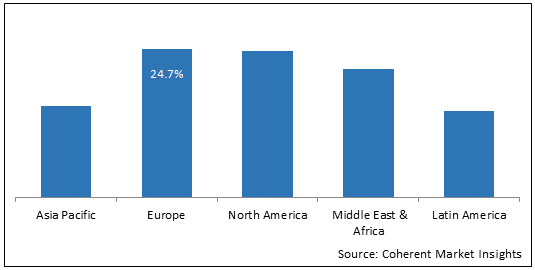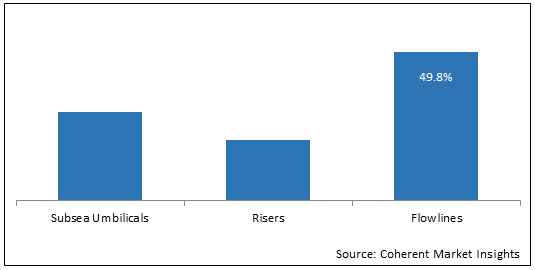SURF (subsea umbilicals, risers and flowlines) offers connection between subsea production and surface systems. Umbilicals provide a vital link between subsea production system, processing system, and the surface and have no contact with the produced fluids. Flowline transports the unprocessed fluid from the subsea well to the riser, which is then transported from the riser to the surface processing system.
Global SURF (Subsea Umbilicals, Risers and Flowlines) market was valued at US$ 34.1 Billion in 2021, in terms of revenue, exhibiting a CAGR of 12.9% during the forecast period (2022 to 2030).
Drivers
Increasing demand for oil and gas backed by increasing exploration and production activity in deep and ultra-deep water depths have boosted growth for the global SURF (subsea umbilicals, risers and flowlines) market. For instance, according to the U.S. Environment Impact Assessment (EIA) report in January 2022, crude oil Producers in Alaska added a substantial new volume of proved natural gas reserves in 2020. The annual total of proved natural gas reserves in Alaska increased in 2020 by 27 Trillion cubic feet (Tcf) quadrupling the state’s total from 9 Tcf to 36 Tcf.
Increasing demand for oil and gas coupled with increasing deep-sea developments has facilitated growth in the market for SURF (subsea umbilical, riser and flowline). Increasing demand for using capital intensive techniques in unconventional sources, and increase in deep water explorations to increase oil productivity has further accelerated SURF installations in the offshore oil and gas production projects.
Among region, Europe accounted the largest revenue share in the global SURF market in 2021. This is owing to growing oil and gas exploration, production activity, and rising initiatives of major players to build advanced technologies. Favorable government regulations in western European countries with the prevalence of customized and advanced technology solutions will spur the investment opportunity in Europe. Growing demand for natural gas specifically from the Eastern Europe has prompted the exploration of unexplored subsea reserves significantly located across the U.K. and Norway.
Figure 1. Global SURF (Subsea Umbilicals, Risers and Flowlines) Market Value Share (%), By Region, 2021

To learn more about this report, Download Free Sample
Market Restraints
The decline in crude oil prices over the past few years stands as a restraint in the growth of the global SURF (subsea umbilicals, risers and flowlines) market. According to the U.S. impact assessment report in January 2022, the proved reserves of the U.S. crude oil and lease condensate declined 19%, from 47.2 billion barrels to 38.2 billion barrels at the end of 2020. Proved reserves of crude oil decreased 8.4 billion barrels in 2020, and proved reserves of lease condensate (produced from natural gas wells) decreased by 560 million barrels. The decline in the crude oil reserves is hampering the overall market growth.
SURF (Subsea Umbilicals, Risers and Flowlines) Market Report Coverage
| Report Coverage | Details | ||
|---|---|---|---|
| Base Year: | 2021 | Market Size in 2021: | US$ 34.1 Bn |
| Historical Data for: | 2017-2021 | Estimated Year: | 2022 |
| Forecast Period 2022 to 2030 CAGR: | 12.9% | Forecast Period: | 2022-2030 |
| Geographies covered: |
|
||
| Segments covered: |
|
||
| Companies covered: |
Prysmian Group, Aker Solutions, TechnipFMC plc, SUBSEA 7, Saipem S.p.A., McDermott International, Ltd., DeepOcean Group Holding BV, Schlumberger, Halliburton, NOV Inc., Vallourec, Oceaneering International, and Siemens |
||
| Growth Drivers: |
|
||
| Restraints & Challenges: |
|
||
Uncover macros and micros vetted on 75+ parameters: Get instant access to report
Market Trends
Rising oil and gas automation, also known as oilfield automation, in the oil and gas industry is the latest trend in the global SURF (Subsea, Umbilicals, Risers and Flowlines) market. The growing number of oil reserves exploration activities involves digital technologies that can help energy producers better compete in global markets. Advancements, such as multi-well pad drilling, multiple fracture stages, and improved well and pipe design, have already boosted drilling efficiencies significantly. Producers also are using fewer rigs to extract more oil and gas in less time, which keeps costs down.
Figure 2. Global SURF (Subsea Umbilicals, Risers and Flowlines) Market Value Share (%), By Product Type, 2021

To learn more about this report, Download Free Sample
On the basis of product type, Flowlines dominated the global SURF (subsea umbilicals, risers and flowlines) market in 2021, the category with a market share of 49.8%. According to Oilfield Technology report in October 2018, Russia is expected to account for the highest new build capital expenditure (CAPEX) of around US$78.8 billion for 2018-2022 period. Moreover, according to Open Access Government, Russia-India is the longest planned natural gas pipeline in the country as well as for the European region. It is expected to start its operations in November 2022 with a planned length of 6000 km.
Recent Developments
Competitive Section
Major players operating in the global SURF (Subsea Umbilicals, Risers and Flowlines) market include Prysmian Group, Aker Solutions, TechnipFMC plc, SUBSEA 7, Saipem S.p.A., McDermott International, Ltd., DeepOcean Group Holding BV, Schlumberger, Halliburton, NOV Inc., Vallourec, Oceaneering International, and Siemens
Share
Share
Missing comfort of reading report in your local language? Find your preferred language :
Transform your Strategy with Exclusive Trending Reports :
Frequently Asked Questions
Select a License Type
Joining thousands of companies around the world committed to making the Excellent Business Solutions.
View All Our Clients